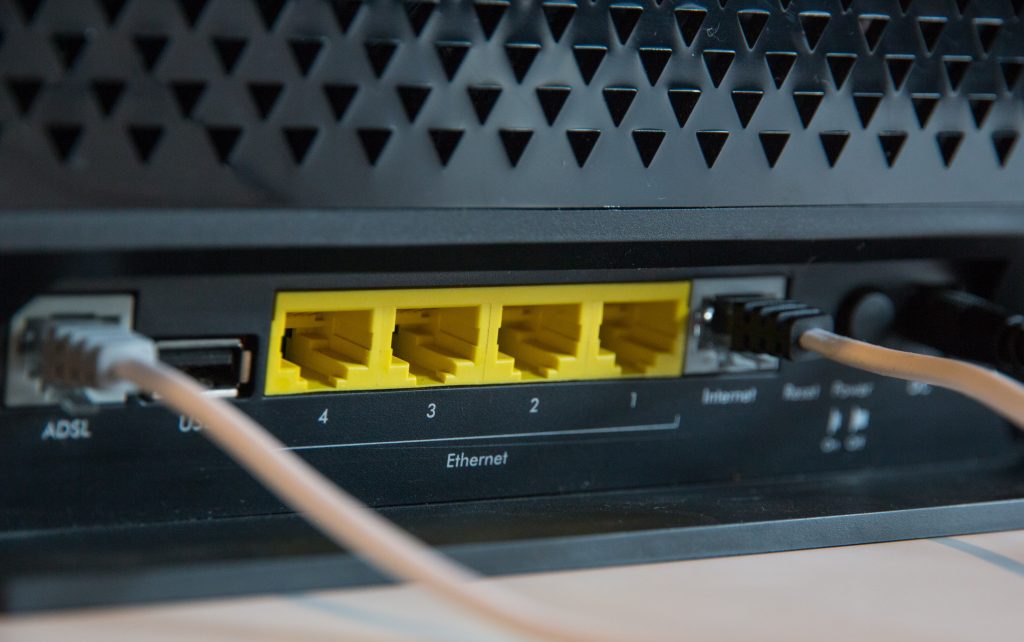Consider this; you are currently running an election in your small but growing nation of about 100 million citizens. During the elections, you need to ensure that all the relevant information is accessible to all the centers. There are thousands of voting centers throughout your country, and each has computers and biometric devices connected to your information system.
The information system was designed to provide data about the voters to all the polling stations. With this in place, voting is much easier as verifying the voter takes very short, which has enabled you to complete the entire voting exercise in a single day.
So, how have you managed to accomplish this mean feat in such little time? Was your information system able to stand to the kind of demand that was being placed on it? Were your servers able to tackle verification for all the polling centers? Were some of the polling centers lagging due to not being able to access the data on the servers and your databases?

These are all factors that you have to keep in mind as you design a system that is supposed to take care of such sensitive and critical operations. Modern applications are in high demand, and availability and reliability are required out of these applications.
When you are hosting your databases, for instance, you need to maintain a reasonable and acceptable level of performance that will not completely knock out your servers and ensure that data is retrievable from the resources that remain. You have to maintain a minimal level of being active or staying awake to handle all the queries from the users of your system.
In this case, the queries coming in from all the polling stations should be handled by your databases. If you have thousands of polling stations, a single server running a single version of the database will not be enough. Queries will place a lot of strain on this single server, and you will find that the entire operation will become too slow to be acceptable.
Additionally, when your data is on a single server, it will become straightforward to rig the elections by hacking into that one server and making modifications or damage to the information. However, modern databases have considered this scenario and have been designed to do more than serving requests and providing responses to queries that clients make. Modern databases are also changing in the design of their hosting.
These servers do not run on a single server but, in contrast, are enabled to run on multiple nodes at the same time. The distributed design has been taken up by the database Cassandra and has enabled the database to be capable of high performance and is reliable on a large scale. When you have millions of customers to handle, Cassandra will ensure that you have a minimally acceptable level of performance.
This is made possible by distributing the database across multiple servers, with each server handling the incoming requests. The design of Cassandra does not assign any leaders or server nodes. Any node in the distributed system can handle your queries, and you will not even have to worry about the reliability of the performance.
Owing to the distributed nature of the database, it is possible to create high-performance and reliable applications that can be run and accessed from anywhere on the globe. When running a multi-national company, the distributed database will ensure that you can handle all the requests.
Any of the available nodes can handle your requests for data, and this ensures that you always get the data you need on your applications. Modern e-commerce businesses and companies such as Facebook and Twitter have been known to use Cassandra as their database of choice. Looking at the scale at which these companies operate, the database is pretty good and useful.

The end-users can get reliable information, and working with the database means that it is trusted and can be relied on to perform at the level of global companies. Additionally, you can host the database on several different data centers and clouds, which means that expanding your operations to cover the entire globe becomes easier and even more efficient.
The fact that Casandra is a distributed database means that you can have several nodes across the globe. As such, any client who uses your application will get data from the node closest to them. For this reason, you can be guaranteed the best level of performance from the database.
It is also very reliable when you can get a response in a short time. You do not have to wait long for a response because the database is a pretty powerful one and has been known to serve huge companies pretty well. For instance, when you are running a scientific application that is receiving data from nodes and sensors from all over the planet, the use of Cassandra will ensure that you do not miss out on any of the data.
It will also ensure that there are no delays in receiving the data since there will always be an active node at any point in time to handle the load placed on the system. By working as a distributed system, Cassandra can offload the task of serving terabytes of data to thousands of servers instead of a super complex architecture that will cost a lot more and even cost more to operate and maintain.
Serving terabytes of data is no joke, and most of the modern giants on the internet are dealing with data at this scale. With the use of Cassandra, data of such a huge size will not be anything to worry about, as the database has been designed for handling such astronomical amounts of data.
Distributed databases are known to be a lot more reliable as compared to databases that are run on a single server. They are also stable in terms of performance, and their management is made a lot easier.
When you are operating at a huge scale, the distributed design means that swapping out and replacing nodes on the database without halting any current operations is possible. This means that when some of the nodes require maintenance, you can easily replace them, and as they undergo maintenance, the new nodes will handle all the requests and queries.
As such, your services will never get halted, and they will be able to run continuously without any interruptions. This is an essential fact when you are considering services that have to be available around the clock. In the case of Facebook and Twitter, the users are always accessing the social networks from several time zones, which means that the servers have to be on at all times.
These nodes need to be capable of providing data to the users at all times. The fact that they are running Cassandra means that they will easily handle the data on behalf of the company very easily. The servers can also coordinate their operations very easily, even when they are on several data centers.
With the use of a database engine such as Hadoop, it becomes possible to reduce the number of database operations that have to be carried out before someone can get a response from the database. The use of Hadoop and Cassandra also makes it easier to host a lot of data for the user. The users will be able to store and serve terabytes of data with much ease, and they will not even feel the strain or stress of dealing with the data.
Big data is a huge concern for modern businesses and organizations, with Cassandra handling massive amounts of data with much ease. Serving up big data in real-time is a massive challenge for modern companies, businesses, and organizations. With a distributed database, serving the data is made more reliable, and it even becomes faster.
A node will only have to serve the clients or users that are closest to each other. This reduces the cost of serving the data to the client and makes the overall cost of running the database design a lot easier. When the data does not have to make many trips around the globe before reaching the client, the system will be much cheaper to operate.
The reduced cost of dealing with big data also means that modern businesses can now handle customers from all over the globe with much ease. The power of Cassandra lies in its ease to scale up, and maintenance is also a lot easier. Swapping nodes and replacing old ones with new ones is very easy.

Additionally, there is no need to remove any of the nodes working or even turn off the entire setup as this can get costly for the business involved. Instead of halting all the operations, one needs to redirect traffic for a while as they change the Cassandra database node. Replacing the database nodes in the Cassandra distributed setup is as simple as replacing a light bulb.
It takes a short while and keeps a system working as it should. Services outages have been known to be the leading cause of loss for companies and organizations on the internet. Whenever these companies need to run maintenance on their information systems, they are usually forced to go offline for a few hours.
The resulting loss of service also causes a huge loss of revenue which means that the business is no longer in a position where it can be able to sustain itself. Cassandra, however, is different and unique in its design. There is no central node that can cause the entire system to go down if it is removed from the system.
Instead, all the nodes on the distributed system are equal, and all of them are capable of serving the data needed by the users. Any of the actively operational nodes will be able to keep a business running and is the reason modern businesses can keep themselves sustainable. As long as there are active nodes on the distributed system, Cassandra will serve responses to queries and meet all the needs of the end-users.
The users will not even notice an interruption or slow down of services when there are plenty of nodes to take care of their requests. Additionally, the database system users also get to spend less time waiting for a result as the free nodes can take care of additional queries. As such, the load on the system gets to be distributed across all the active nodes.
All the active nodes will be given a share of the overall workload on the system, and with this in place, your system will be able to have better overall performance. The high performance of the distributed system means that the latency for database queries and the applications that depend on the Cassandra database is minimal. As such, the applications are a lot more responsive, and they can return new data to the client application in a matter of milliseconds.
As long as you are on a good network, the database will give you the data that you need in very little time. Elimination of wait for the modern applications is an important determiner of their overall performance which means that the companies and businesses that rely on Cassandra get to provide better services to their end-users and customers.
Features of Cassandra
Cassandra is a decentralized database which means that all the nodes in each database cluster have the same role. There is no single point of failure for the cluster that ensures that any node can handle your requests.
As such, you can easily distribute your database to data centers that are closest to the clients and customers that your business or organization handles. Additionally, you can also replicate data on the nodes to ensure that it is available whenever requested.
Cassandra has a distributed system design and can have as many nodes as you need on each data center. The different nodes will ensure that you have easily shared out all the tasks across the nodes. Your database will handle all your customers’ needs, and you will no longer have to worry about some of the customers not getting their data in time.
Disaster recovery, redundancy, and fail-over are some of the defining characteristics of Cassandra. With replication, you no longer have to worry that some of the data is available on some of the nodes and not others. If you are still worried about scalability, the operation throughput on the database is known to increase linearly as you keep adding new machines.
There is no downtime or interruptions to running applications, and your business will not experience any halts in their operations when you need to scale up. The addition or removal of nodes does not bring down your entire system, which is the reason your database will be able to serve your clients and customers no matter how many active nodes are available to handle your client and customer requests.

Writing to several nodes and replicating the data on the servers also ensures that you have a fault-tolerant database. Replacing failed nodes is also made possible, and it is also straightforward. There is no downtime involved with any maintenance and upgrade operations, and you can continue your operations as if nothing has happened.
This means that Cassandra is a reliable database that is consistent in reading and writing and is not prone to failure. With a lower rate of failure, your database will be consistent in its operations, which means that it will become more reliable for all kinds of operations. Cassandra also comes with support for MapReduce, which means that if you need to work with Hadoop, the setup process is straightforward.
Upgrading your database to handle all kinds of data types is also possible, and it does not take very long to accomplish. The driver languages that are available for the database include Java and Python. As such, developers can easily create software programs in these languages, which are then used to interface the database with various other applications.
For instance, an online shopping system that has been written in the Python programming language can be used with the Cassandra database with much ease. The system will need drivers that will be used to interface with the Cassandra database and keep the data moving between the database and the application.
The ease of use with these programming languages also means that developers can easily create applications and queries written in these programming languages. The ease of writing queries makes interaction with the database a lot easier. Additionally, the programmer can also safeguard the database by preventing the wrong kind of queries from being made on their data.
Whenever the user enters the wrong kind of query, the driver will validate this search before executing it. The database will stay safe, and it will be tough even to try running illegal searches and queries on the Cassandra database. This shows the safety and efficiency that is provided by the distributed database.
Clustering is also a possible option for making the data available to more users at the same time. When you are clustering, you should take care to label your clusters accordingly. You should also assign tasks depending on what the clusters are supposed to handle for your overall system. For instance, some clusters can handle messages, while others will be tasked with handling social media feeds.
Load balancing is also very simple with Cassandra, and when you need to ensure that your servers are always running reliably, you will need to balance out the load on the database. When the queries are being shared across all the clusters, you will save time with your data. Additionally, you will also ease the load on some of the nodes and ensure that all your nodes across the globe are active and serving requests.
As such, your customers and users of the database will enjoy a better experience, and while they interact with your database, they will not have to grapple with huge delays and long waits before they can receive the data they require. The fact that you can load balance data on the Cassandra database also means that you will be able to operate actively and reach all your users whenever you are running huge data loads on your database.
The clients will not be worried about what the other nodes are doing, and they will be able to experience a consistent experience while interacting with the database. This is very useful for real-time messaging applications and social media, and social networking applications. These applications require that the data that is fresh and latest be updated on the client applications.
Replication of the data on the different nodes ensures that the updates get to reach the end-users in a matter of seconds. A global update can take a few minutes to propagate across the entire globe, which means that the social network users will get the updates they need within a short time.
Users of Cassandra
Many companies around the world have been using Cassandra to store vast amounts of data. For instance, Talentica software has used the database as a back-end for their analytics application. Their cluster of 30 nodes is capable of storing about 200GB of data each day.
As you can see, the company is inserting a lot of new data each day which means that their choice of database solution fits the task they are charged with. Cassandra comfortably handles their requirements, and they can take on a lot of new information with much ease.
AppScale currently uses the database as a back-end for their Google App Engine applications.
Cisco’s WebEx uses Cassandra to store the activity and feed of their users in close to real-time.
CERN ATLAS experiment currently uses the database to store its online DAQ system’s monitoring information.
Clearspring makes use of the database to track how many times the service is used to share URLs. It is known to take care of more than 200 million daily requests.
For storing the server metrics of their users, Cloudkick uses Cassandra.
Cloudtalk makes use of Cassandra as its data store for users to create messaging apps using their API.
Connex.io has a massive database of user contacts which is stored on a Cassandra cluster.
Constant Contact makes use of Cassandra for their social media marketing application.
Digg moved their data to Cassandra clusters in 2010. with a massive bunch of load testing, they were able to improve the database significantly. The improvements that were made to the database, as a result, have led to the advancement of Cassandra and the introduction of a whole lot of features to the database.
Digital Reasoning’s Synthesys application was rolled out in 2010 and scaled up to more than 400 Cassandra nodes. One of the first demonstrations of a database capable of growing up to a massive size without placing any significant load on the available processing and storage resources. The ability to scale up to more than 400 nodes means that the application can store and deal with a lot of data at the same time.
The early days of Facebook’s Inbox Search relied on 200 nodes of Cassandra to power searching for messages and users on the inbox. However, the idea was abandoned when HBase was used to build the Facebook Messaging platform.
IBM once built a scalable email system based on Cassandra
Cloudsandra is built on a combination of Hadoop and Cassandra, which is known as Brisk.
Martini Media Network shifted from using MySQL to Cassandra.
Mollom tracks reputations from IP data using Cassandra.
Netflix, the movie streaming service, uses Cassandra for its backend database.
FormSpring uses Cassandra for counting responses.
Mahalo.com uses the database for logging user activity as well as topics on their Q&A website.
Ooyala was said to have built a real-time analytics engine based on Cassandra.
OpenWave uses the Cassandra database for its next-generation messaging platform.
OpenX has been using more than 130 Cassandra nodes for its advertising network and ad delivery services.
Outbrain also uses Cassandra for the many recommendations that you get when you visit websites on the internet.
Plaxo has more than 3 billion contacts in its database and relies on Cassandra to manage and keep all this data organized and accessible.
PostRank uses Cassandra for their back end.
RackSpace uses Cassandra for its internal testing and prototyping.
Reddit made a move from memcacheDB to Cassandra in 2010
RockYou uses Cassandra for more than 50 million active users to keep an accurate time record of their gaming activity online.
ShopSavvy uses Cassandra to store data for their barcode scanning application.
SimpleGeo has been able to construct a vast geospatial database right on top of Cassandra.
For the storage of user account information, SoundCloud uses Cassandra. As I am typing this, I am listening to music on SoundCloud 🙂

Twitter also uses Cassandra internally.
Urban Airship uses Cassandra to host more than 160 million applications running on 80 million unique devices.
Utillabs uses Cassandra to record events on a finely detailed level.
Walmart Labs uses Cassandra.
Yakaz uses Cassandra on five nodes to store millions of images as well as its social network data. The social network can keep itself running reliably by distributing the database on five different nodes.
As such, the network users do not have to be interrupted or run into service outages thanks to the distributed nature of the database that is being used by the social network.
Viacom Hosting makes use of the Cassandra database for SendCluster, its email, and SMTP gateway, which substantial volume senders use. It is capable of storing more than 40 million emails a day which is used for email marketing. It is a private email platform that is used for large email senders.
The senders are known to send private marketing emails, and the service is known to get very busy, with millions of emails being sent each day. The use of Cassandra ensures that the sending platform is stable and operating all the time reliably.
As you can see from the above examples, there are many companies out there that are already using Cassandra. Most of the companies upgraded to Cassandra from another different database. This is since Cassandra offers many valuable features, as we have seen in the above discussion.
The companies that resorted to Cassandra were impressed with the clustering feature and the fact that the distributed database can handle terabytes of data with much ease and comfort. When a company needs to store 400 GB of data each day, this can get huge, and it is only a robust and reliable database such as Cassandra, which can handle such massive amounts of data.
Summary
As web applications have kept evolving, there has been a growing need for advanced breeds of database models. The data storage needs of modern companies are ever-growing, and there is no slowing down in the pace at which this growth is taking place.
As companies scale up, they need a database to sustain them and keep them operational for much longer. A distributed database such as Cassandra is one of the best solutions for the modern data requirements of these companies.
Not only does it do away with the need for expensive data storage solutions, but it is also known to be high-performance and reliable. As such, the end-users will be able to handle their data requirements very easily. The use of the database also means that the users will keep their clients’ needs met and all their requirements served.
The use of the database ensures that the typical business can handle massive volumes of data without giving in to the pressure of modern enterprises. These businesses are known to deal with a lot of data. The rate at which data keeps accumulating is also growing rapidly, and with this comes the need for a database that will be able to take care of all the growing data.
Whenever the data is increasing to a level where it seems unmanageable, a modern distributed database such as Cassandra will be the primary way to take on the additional load and ensure that the current business needs are attended to.
Cassandra is a distributed database that is ideally suited to the modern data needs of the world and the currently evolving applications. Web applications and modern businesses are dealing with a lot of data and many customers.

All these customers need a reliable level of service provision, which means that the company needs to work with a robust database that will handle all the needs and requirements of the customers.
The customers will not be worried about getting services when the business has invested in a distributed database that will meet the customers’ needs. The company also needs to maintain its data and information systems without downtime or loss of service for its customers.
These are all features that have been made possible by the use of a distributed database such as Cassandra. Cassandra users can easily replace offline nodes without any interruption in the service provision. The database is also designed for high performance even when the amount of data being dealt with is astronomical.
Handling hundreds of gigabytes of new data each day means that the database will have grown to a vast level even within six months. Dealing with multimedia in the database is also complicated, which means that only a distributed database will keep track of all the tracks that are being played on a streaming web service, for instance.
Querying capabilities are one of the main determining factors of an excellent database to use. The Cassandra database has compelling query features, which makes it one of the best databases in existence.
The users of the database will be able to retrieve the records they are looking for in seconds. No matter how complicated a database query might be, the database will ensure that you can get back results in an as short time as possible.
Responsive applications can be built on top of the database, which will also mean that users will not have to worry about getting the data they need. Using a distributed database such as Cassandra is that the users will bring back results in a short time.
Additionally, the use of Cassandra means that the business can get the stress of dealing with massive amounts of data taken off their minds. They will then get to serve their customers better, and the availability of their services online will always be guaranteed.
No matter what time of day or night you visit a web application or web service connected to Cassandra, you will always find a node that is available to handle your requests. The use of replication also means that any data you need will already have been replicated and moved to the closest node.
For this reason, you will be able to keep your data available and accessible to all your users, and there will be no reason to worry about your online services and web applications. Reliable applications are built on a solid foundation. When it comes to data, the Cassandra database is one of the typical examples of a distributed database and is more fault-tolerant than the other types of databases.
Data coming in from various sources and presented in different formats no longer needs to be a cause of worry for developers. With a versatile and flexible database such as Casandra, storing information has now been made much more accessible. The users of the databases can now process queries from all corners of the world using distributed nodes that are spread out in data centers all over the globe.
The use of the database has also made it possible to represent data in different formats. The complexity of data is not a cause for concern when working with a distributed database such as Cassandra. With the database, all your data storage and processing issues are dealt with in one place.
All you need to be concerned about is the health and status of your clusters and whether your nodes are fault-tolerant. As long as you are maintaining your clusters, the database will be able to take care of the rest of the functions involved with keeping the database alive and attending to the customers’ needs. The database users will also be thankful for fast and reliable services available all the time.
For your business or organization, this means happy customers and users that trust your business since they can access your services at all times without getting worried about downtime and inaccessibility of the information that they need. The services that you offer the customers and users with the Cassandra database will also be available in any position globally, meaning that the users will have an easier time reaching you and interacting with you.
If you are a business, this will translate into more business opportunities and more transactions for your business. Cassandra will ensure that you make millions of sales online each day and ensure that you can keep track of all the transactions. Making millions of daily transactions might sound like a Herculean task, but when you have a giant like Cassandra, it is no longer something that you should be worried about.
Compared to other types of databases, Cassandra has far more advanced features than the others. It is also more reliable, and its distributed design makes its performance stable all over the globe. Even when some of the nodes and clusters are not performing at their total capacity, the available nodes will provide you with the data that you need all the time.
Cassandra should be the ultimate choice for you whenever you need a database that will keep you running without interruptions. Scaling up on this database is a lot easier, and there is no need for you to worry about the kind of data you are storing. It also works with Hadoop and other modern big data technologies.
For this reason, you can trust the database to take care of all your data storage needs. If you are a big company or business moving to the digital realm, please consider Cassandra for your databases. It will not let you down.





